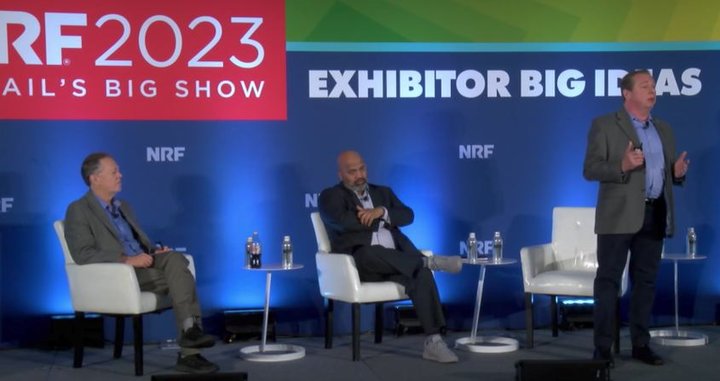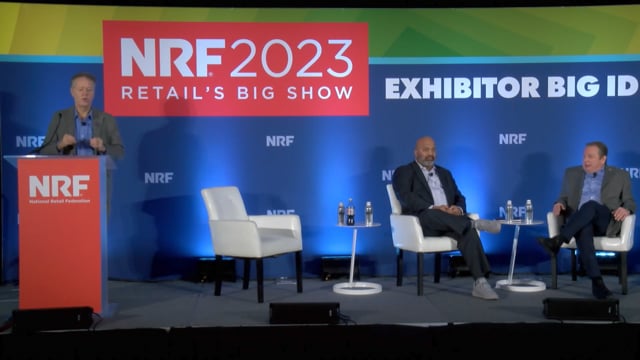5 Critical Value Sources from Distributed Order Management in an Omnichannel World
Produced by Softeon
Order fulfillment orchestration is essential to achieving delighted customers and enhancing the bottom line. In this insightful presentation, Jerry Sheldon, Senior Analyst IHL Group explored the latest trends in Order Management Software from a brand new study from the IHL Group. He also discussed the five fundamental ways OMS/DOM creates value for omnichannel retailers, direct to consumer brand companies, and B2B business models.
In his opening note, Dan Gilmore, CMO of Softeon stated: Distributed Order Management, or DOM, has become truly an essential software tool for omnichannel retailers and direct-to-consumer brand companies. Why? There are a number of reasons. DOM allows companies to flexibly define and then dynamically execute business and fulfillment strategies using rules – no coding required. DOM also enables a range of omnichannel processes, such as store fulfillment, buy-on-line pickup from store, curbside pickup, vendor drop ship and more. Critically, DOM maximizes ecommerce profitability by dynamically selecting the lowest cost fulfillment node that meets customer service commitments while considering network capacities and constraints. DOM will enabled many additional functions and processes, such as available-to-promise, inventory visibility, inventory allocation, backorder management, subscription processing, and more.
"With severe DC labor shortages, rising fulfillment costs, and ever faster delivery cycles, retailers and direct-to-consumer brand companies require a new set of tools to optimize fulfillment performance and maximize profitability," said Dan Gilmore, Chief Marketing Officer at Softeon, adding, "Stand alone or together, Softeon's Distributed Order Management (DOM), Warehouse Management System (WMS) and Warehouse Execution System (WES) can synchronize complex fulfillment processes to meet customer requirements at least possible operating cost, across the network or in the DC."
Satish Kumar, VP, Client Services and Technology Softeon, highlighted Softeon's DOM solution capabilities, which includes a real-time simulation tool that uses machine learning to analyze historical and real-time datasets to determine fulfillment patterns and predict inventory and capacity needs. The solution is component-based and can be customized to meet the specific needs of each retailer or organization. The tool also assists with sourcing and allows for optimization by assigning weightage factors to determine the best sourcing option. The simulation tool has been successful in helping clients with their omni-channel processes, including curbside pickup.
In his presentation, Jerry W Sheldon, Senior Analyst, IHL Group, highlighted, "The order management market is a very hot area right now, with a projected 228% growth over the next five years. This makes it a great investment opportunity. Over a third of retailers see order management as a significant priority, which we believe has a significant influence on moving the needle."
He went on to present the five critical value sources from order management:
- Where is your Inventory stored? This has undergone significant changes resulting in one of the most disruptive times in recent history. This has led to a need to rethink our approach to inventory management. We can see this in the emergence of various strategies, such as the growth of dark stores, the booming trend of micro-fulfillment, and even Home Improvement companies acquiring their own ships. E-commerce companies are also developing their own transportation systems. While the just-in-time approach was once effective, the recent supply chain disruptions have shown its limitations. It's akin to a 20-lane superhighway suddenly becoming constrained to just five due to an unexpected event. This requires a rethinking of where inventory comes from, how it's stored, and how it's distributed to customers, not just for individual retailers, but for the industry as a whole.
- Relevance of physical stores: In reality, stores have always been important, even during the time when some claimed they were becoming obsolete. However, the role of stores is evolving and becoming more complex, which places greater pressure on inventory visibility systems. As indicated by one of the initial bar charts, 52% of people are concerned about inventory visibility. The current disruption in customer journey due to out-of-stock positions has put even more pressure on order management systems, which are required to support a wider range of customer journeys. This necessitates flexibility, which is a recurring theme throughout my presentation. It's essential to remain adaptable because we can never predict the unexpected events that may arise in the future.
- Advanced Analytics: This can be achieved through various means, such as algorithmic-based approaches or AI/ML. When we examine the order management market, we see that advanced analytics is unlocking new value and providing quicker returns on investment, greater flexibility, and more significant benefits to address the unexpected events that occur in our environment. Our assessment of the vendor marketscape reveals that only a few vendors have made significant progress in order management with AI/ML, but all the leading vendors have recognized the power of AI/ML and have it on their roadmap. We are optimistic about the potential of advanced analytics and its ability to enhance the value of order management.
- Fulfillment Optimization Engine: After conducting assessments of the order management market over a six-year period, we have looked at around two dozen different vendors, and the fulfillment optimization engine is the most significant differentiator. Softeon, in particular, has a unique feature that sets them apart from the competition: a scenario generation engine. Many retailers are hesitant to modify their fulfillment rules due to concerns about unintended consequences. Softeon's scenario generation engine allows retailers to test out changes to their rules before implementing them fully, ensuring that they are making informed decisions when setting up their fulfillment optimization rules.
- Resurgence of old practices: It's interesting to note that when I first joined the industry, on-premise customized software was the norm, as every retailer had unique requirements. This was followed by the advent of cloud-based software, which offered great configurability while utilizing the same codebase. However, our research shows that retailers are now seeking customization flexibility within the cloud. Consequently, we are witnessing a significant increase in the number of vendors who are addressing this particular solution set by incorporating features such as more user exits, low-code and no-code functionality into their solution stack. The primary objective is to future-proof the solutions.





